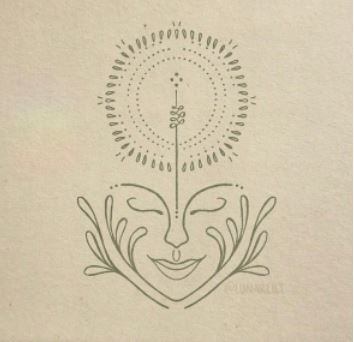The pineal gland: explained
Our psychic prowess is centered in our brain, in a small gland called the pineal gland.
Glands are important control centers of the body, primarily regulating hormonal releases, which are essential to human functioning. Excreting chemicals through sweat, most gland systems are the garbagemen of the body, cleaning the blood stream and pushing toxins to the surface.
The pineal gland is so special: it is situated in between the two hemispheres of the brain, tucked into where the hypothalamus joins the frontal lobes. The hypothalamus has been called the Gd center and is believed to be the seat at which we hold feelings and our empathic responses. It also communicates directly with all of our organs and helps to regulate their functions. It is attached and communicates with the pineal gland, which resembles a tiny pinecone, and contains cells like the cornea, lens, and retina in the eye, so that the pineal gland is photosensitive.
There is little known about the pineal gland in modern science. We have found the pineal gland is floating in highly charged cerebrospinal fluid, and receives more blood flow than any other organ, endowing the small gland with the highest concentration of energy in the body. It produces a chemical called pinoline, and a serotonin-derivative, melatonin, which is a hormone that effects wake/sleep patterns, and our response to the changing seasons. Melatonin also has been found to affect our mood, and in connection with our hearts, our perception and ability to love. It has also been found to have a profound effect on aging, as melatonin suppresses the growth hormone cortisol. The production of melatonin is stimulated by darkness and inhibited by light, entraining us to the 24-hour circadian rhythm of the earth around the sun.
Although scientists strive to explain the function of the pineal gland, throughout history scholars have understood the small grouping of cells as the seat of the soul, and the place from which humans can build transcendence and psychic abilities. It is believed melatonin quiets the body and mind, allowing states of higher consciousness. Pinoline and another natural secretion of the gland, DMT, are psychoactive, allowing changes in our perception and behavior, as well as effecting dream states and waking visions.
DMT is produced in the pineal gland during deep meditation, and other extraordinary experiences like sexual ecstasy, and during the REM phase of sleep. DMT is linked to the visionary states of the spirit of higher consciousness.
Renes Descartes, of the ‘I think therefor I am’ wisdom, and other similar French philosophers, espoused theories claiming the pineal gland was the connection between intellect and body, because of its central and solitary location in the brain. Enlightenment-age philosophers likely garnered such ideas from far more ancient scholars, as the history of the study of the third eye can be traced back to Egyptian and Zoroastrian times, in which ancient priests taught that energetic snakes live at the base of the spine, uncoiling as transcendental states are achieved, and connecting at the top of the head through the third eye.

It has been found that heavy metals like fluoride, which can be found in most municipal water supplies, as well as pesticides and antibiotics can accumulate within the pineal gland as phosphate crystals, forming a hard shell around the gland. This calcification has been shown to
lower the production of melatonin, impair the sleep/wake cycle, and further disrupt our regulation of circadian rhythms.
It is possible to decalcify the pineal gland through herbs and mushrooms like chaga, algae, and apple cider vinegar, as well as other detoxifying agents. It is also shown that intentional psychedelic use and regularly practicing meditation revive and build the strength of the pineal gland. Since the pineal gland is photoreceptive, ancient yogis have practiced alternating sun gazing and light-deprivation to stimulate the production of melatonin.
Four ways to stimulate and decalcify your pineal gland:
- Meditation: all forms of meditation, from breath centered to guided sessions, have a profound effect on the central nervous system and the brain. By shifting brain states from normal functioning to the theta state, the pineal gland responds by calming and healing the body.
- Psychedelics: entheogens such as cannabis and psylocibin expedite the entrainment process, allowing the body to slip into a charged states of relaxation that in conjunction with the right mind set and setting, can heighten psychic abilities.
- Eating right: Avoiding antibiotics in commercial meat, and pesticides on produce, is an easy way to detoxify the brain and body. By adding supplements like adaptogens and other detoxifying agents like ACV or citrus, the pineal gland can clean itself for optimal functioning.
- Dreaming: By actively using visualization methods, it is possible to stimulate pineal function and actively release neurochemicals that are usually only released during REM sleep, shifting the brain state into higher consciousness.
